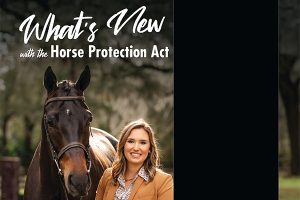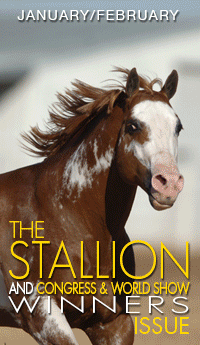What’s New With The Horse Protection Act
Click here to read the complete article
318 – September/October, 2025
 By Kimbrell Hines, Esq.
By Kimbrell Hines, Esq.
The Horse Protection Act (“HPA”) is a federal law passed in 1970 to combat the inhumane practice of “soring” that generally refers to intentionally causing pain to a horse’s feet and/or legs to exaggerate its gait for competitive advantage. While historically associated with gaited breeds like Tennessee Walking Horses and Racking Horses, the HPA applies broadly to all horses, regardless of breed or discipline. The USDA’s Animal and Plant Health Inspection Service (APHIS), which enforces the Act, has reaffirmed this point repeatedly.
The HPA prohibits any sored horse from being shown, exhibited, transported, sold, or auctioned. Under the HPA, “soring” is broadly defined as any practice causing a horse pain, inflammation, lameness, or distress when moving. This expansive definition, combined with steep penalties and increased public scrutiny, means equestrians across all disciplines should pay close attention to how the HPA is enforced.
While the law has existed for over 50 years, recent enforcement controversies and legal challenges have pushed it back into the spotlight. In particular, new attention has been drawn by the June 2025 findings of the USDA’s Office of Inspector General (OIG), which reviewed APHIS’s enforcement practices following allegations of unfair treatment at the 2024 Tennessee Walking Horse National Celebration.
Key Findings from the Inspector General’s Review
The OIG’s report identified several major issues in APHIS’s enforcement of the HPA:
Click here to read the complete article
318 – September/October, 2025










